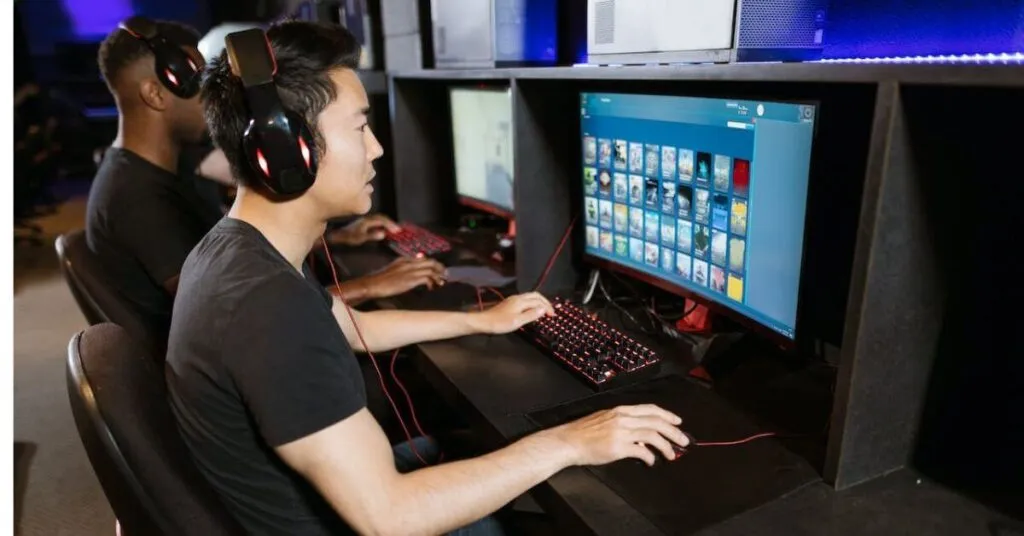These Games Allow Skin Trading – In the digital landscape of gaming, the phenomenon of skin trading has emerged as a significant element, fostering a sense of community and offering an additional layer of engagement. This feature allows players to acquire, exchange, or sell aesthetic modifications, known as ‘skins’, for in-game characters or items. A variety of popular games have integrated this unique feature, creating an economy of its own within the gaming ecosystem. This article delves into an exploration of skin trading, the games embracing it, the economics therein, associated risks, and its prospective future. Join us as we navigate this intriguing aspect of the gaming world.
Understanding the Concept of Skin Trading
In the realm of online gaming, skin trading refers to the exchange of virtual goods, often decorative or cosmetic elements, between players. The concept of skin trading has grown exponentially as the global online gaming community expands. Legality of skin trading varies across regions, influenced by local laws and regulations pertaining to online transactions and virtual goods.
Skin trading legality is a pivotal consideration for the gaming industry, with some jurisdictions allowing the practice while others impose restrictions or bans. This dichotomy has led to a complex, global network where skin trading flourishes in some areas and is suppressed in others.
The impact of skin trading on gameplay is multifaceted. On one hand, skins can offer players a way to personalize their game experience, fostering a sense of identity and belonging within the gaming community. On the other hand, the financial aspects of skin trading can introduce real-world elements into the gaming environment, potentially disrupting balance and fairness.
Popular Games With Skin Trading Feature
Several renowned online games offer the feature of skin trading, enhancing player engagement and personalization. Games such as Counter-Strike: Global Offensive (CS:GO), Dota 2, and PlayerUnknown’s Battlegrounds (PUBG) have integrated this feature to allow players to customize their in-game characters.
– Counter-Strike: Global Offensive (CS:GO): The pioneer of skin trading, CS:GO’s system allows players to trade valuable skins, adding a new dimension to the game.
– Dota 2: This game offers a wide range of skins, allowing for high levels of customization and engaging player interaction.
– PlayerUnknown’s Battlegrounds (PUBG): The popularity of PUBG’s skin trading mirrors the game’s overall success, further enriching the gaming experience.
These games, however, are not without controversies. Skin Trading Regulations have been implemented to mitigate ethical issues in skin trading, such as scamming and underage gambling. The gaming companies also strive to ensure that skin trading remains a fun, fair, and safe feature. While skin trading has its challenges, it has undoubtedly become an attractive feature that adds a sense of belonging and enhances the overall gaming experience. Interested in skins? Check opmarket.
The Economics of Skin Trading
The skin trading market, an integral part of these online games, presents a complex economic system worth exploring. This market operates on supply and demand principles. The rarity and desirability of the skin significantly influence its price, making ‘Skin Pricing Factors’ a crucial aspect of this virtual economy.
Skin value can fluctuate based on numerous factors like game updates, player demand, and market saturation. As such, the skin trading market closely resembles traditional commodity markets, albeit in a digital landscape. This dynamic nature of skin trading can profoundly shape the game’s virtual economy, creating an environment where players’ actions can directly impact market trends.
Furthermore, the skin trading economy also has a real-world impact. It enables players to monetize their gaming skills and assets, thus blurring the lines between virtual and real-world economics. In essence, the economic system of skin trading is not just a game feature, but a microcosm of larger economic principles at play. Undeniably, the ‘Impact on Virtual Economy’ goes beyond the game, affecting players’ purchasing power and overall gaming experience.


